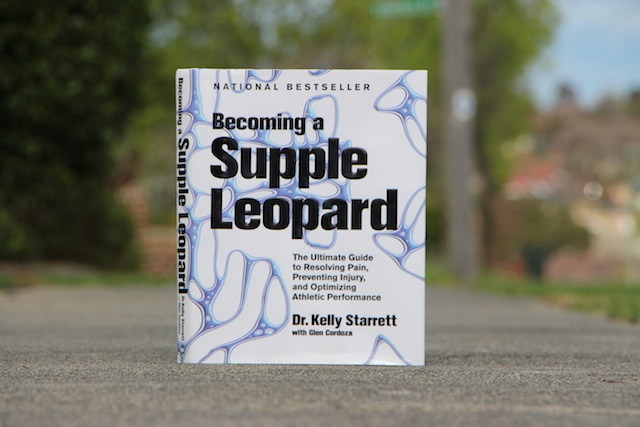
Kelly Starrett’s ‘Becoming a Supple Leopard”
This week we take a moment to review the National Bestseller by Dr. Kelly Starrett, “Becoming a Supple Leopard”.
Item: “Becoming a Supple Leopard”
Price: $59.99
Publisher: Victory Belt Publishing
Author: Dr. Kelly Starrett with Glen Cordoza
Page Count: 400
Purchase: Amazon
Publishers Notes:
Join the movement that has reached millions of athletes and coaches; learn how to perform basic maintenance on your body, unlock your human potential, live pain free… and become a Supple Leopard.
Improve your athletic performance, extend your athletic career, treat body stiffness and achy joints, and rehabilitate injuries—all without having to seek out a coach, doctor, chiropractor, physical therapist, or masseur. In Becoming a Supple Leopard, Kelly Starrett—founder of mobilitywod.com—shares his revolutionary approach to mobility and maintenance of the human body and teaches you how to become your own performance doctor, allowing you to live a healthy, happier, more fulfilling life.
Our Review
When I left for my first CrossFit class, I’m pretty sure my husband went into standby mode equipped with a fully charged phone, car keys, and health insurance cards in hand. I’d like to say he’s just paranoid, but the truth is, I’m injury prone — otherwise a known as NSFP, “not safe for public.”
If you think I’m exaggerating, let’s take a quick stroll down [broken] memory lane. My first concussion was at age two, my second at age 14. I stepped on a nail in sixth grade and tore the lining of my hip when I was senior.
By the time I graduated high school I had broken, sprained, or jammed every one of my fingers in car doors, in locker doors, and while playing sports. My adult life included a skiing-related knee injury, a broken toe walking up stairs (ok, alcohol may have been involved with that one), and bumps and bruises from multiple coffee table and bed frame collisions.
It only got worse when I entered CrossFit. One of the biggest criticisms of the “sport of fitness” is increased rates of injury, and I’m definitely not helping the bias. Learning cleans, I dropped the bar on my thighs causing bruising that made strangers question spousal abuse. I tore my bicep tendon, and I’m not even sure how. I fractured my wrist when I lost my footing doing 36” box jumps.
My Italian nose is constantly taking a beating on any overhead lifting. And I chipped my tooth during Grace—and, no, the irony is not lost on me. Enough proof? If not, give me a few minutes to do a WOD, and I’m sure I can add to the list.
When life is the veritable pain that mine is, opening the recently released Becoming a Supple Leopard is like a gift from the gods — a bible for klutzes, if you will. Based on his successful Mobility WOD website, author Kelly Starrett turned the stretching and recovery information he’s been sharing through videos into photographed step-by-steps of how to fix movement patterns, rehab injuries, and improve training.

The Good
Pictures: When I was little, I had a ballet book I thought was amazing. It had so many pictures that showed real girls doing all kinds of dance positions with detailed instructions. I was convinced that I would never need a dance teacher because the book was lesson enough. Turns out a five-year old can’t teach herself to demi-plie after all. However, I still think that book rocked and Becoming a Supple Leopard has a very key ingredient in common — pictures!
I may be a writer, but I understand how well-taken pictures can turn writing from good to great. And luckily for all of us, so did Starrett. He packed his 400 textbook-size pages with images that break down every mobility exercises into individual steps. A monkey could get his stretch on if he needed it…but I’m going to guess monkeys are pretty flexible all on their own.
Approach: If you ever try to publish a book, a publisher will be quick to tell you that you need a platform. (No, it’s not made of wood.) That’s code for you better have an established audience and something unique to set yourself apart. Starrett’s got both. The audience was easy given he’s got tons of CrossFitters following him.
But it’s his fresh style that makes him unique. He’s found a way to make rehab, recovery, and physical therapy feel like you’re doing something cool. Case in point: page 35. Turn here and you’ll find Starrett using the “Captain Morgan” pose to help explain how to keep a neutral spine when standing all day. Brilliant and informative. After all, we all have a little Captain in us.
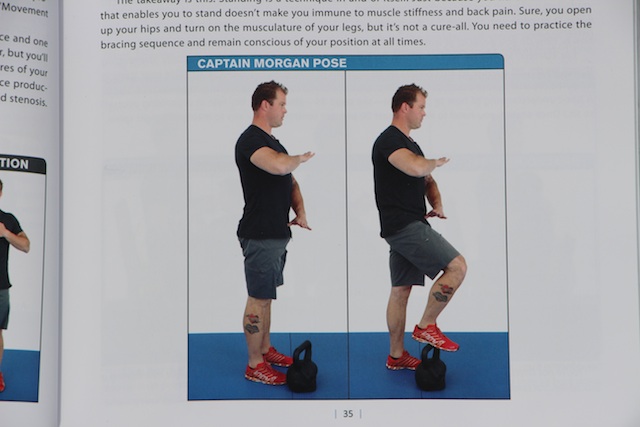
Depth: I have to admit, I didn’t read the entire book before writing this review. But that’s only because there are a lot of freaking words! For some that would be a “bad,” but in this case, you shouldn’t be reading it all at once.
The whole idea is to break it into pieces. Find the exercises that you need due to poor athletic performance or past injury and read up. When you’re in pain and want answers, trust me. You’ll be grateful for just how deep Starrett gets.
Extras: When I think of Kelly Starrett, I think primarily of mobility. But he has so much more to offer — and he does just that. Specifically, he shows you proper techniques and movement patterns for just about every exercise you’ll ever see in a WOD, including O-lifts. That’s a special kind of wonderful all on it’s own.
The Bad
Title: I get it, Starrett has a language all his worth. It’s the unique part I was getting at with the platform. I even love a good quirky title, but this one just feels a touch, um, dirty. In fact, one of my CrossFitting pals pointed out that he left this book out in the open before he and his wife left the kids with the babysitter.
He’s pretty sure the babysitter thought it was a sex book, because a few odd looks came their way after spotting it. If you have to start hiding your rehab book in a 50 Shades of Gray sort of way, maybe it’s time for a different title. Or it’s the most ingenious marketing ever. Probably the latter.
Price: Going off of the book sticker price, I choked a little when I saw $59.95. That seems like a whole lot of money for a book that is actually going to cause you pain. Albeit good pain. However, you most likely will never pay the sticker price since places like Amazon and Barnes and Noble are always kicking a percentage off. My advice, shop around.
Website: It’s sort of a backward criticism, but I’m bummed that Starrett’s website is now mostly a paid subscription site. I get it, why buy the book if you can get it all for free and in video version online. Money must be made. But in the way that pictures make words better, video hits it all out of the park. Guess I just have to suck it up.
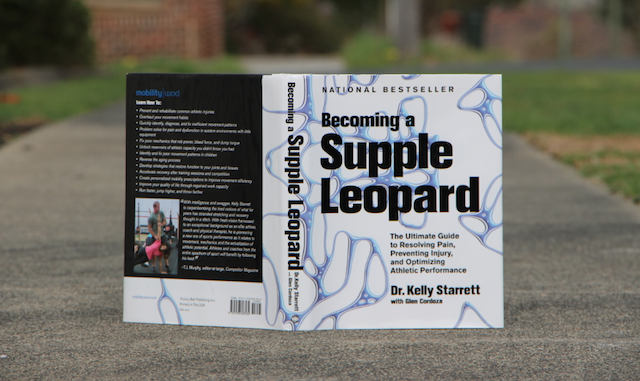
Conclusion
Having been through physical therapy of every kind, I have to say that this book is pretty priceless. While I don’t advocate for not seeing your doctor, there are those ailments that you could probably do a little DIY fixing. And Becoming a Supple Leopard is the perfect handbook. Kelly Starrett Supple Leopard is definitely worth the read!
You’ll be hard pressed to find a manual that does as fine a job as breaking down the sheer quantity of head-to-toe mobility exercises as this book. Given my history, I can’t wait to try them all!






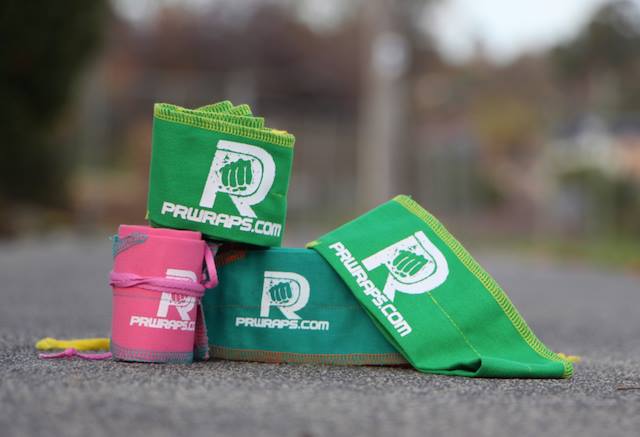
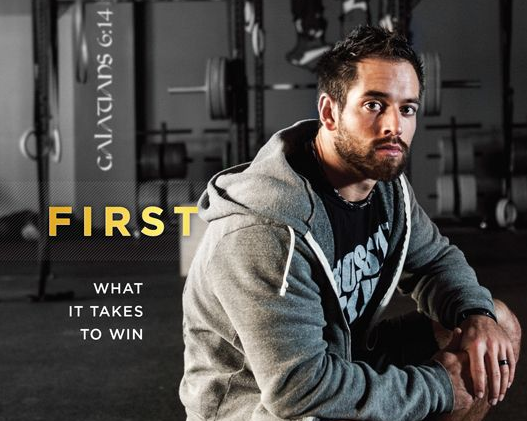

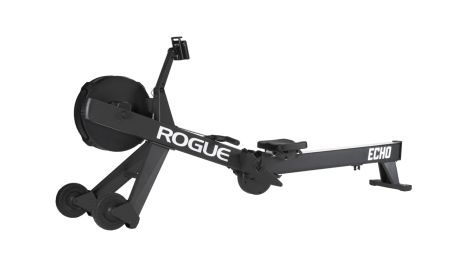
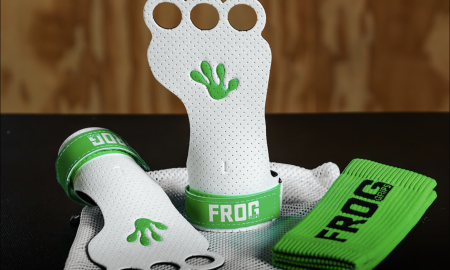


Follow Us